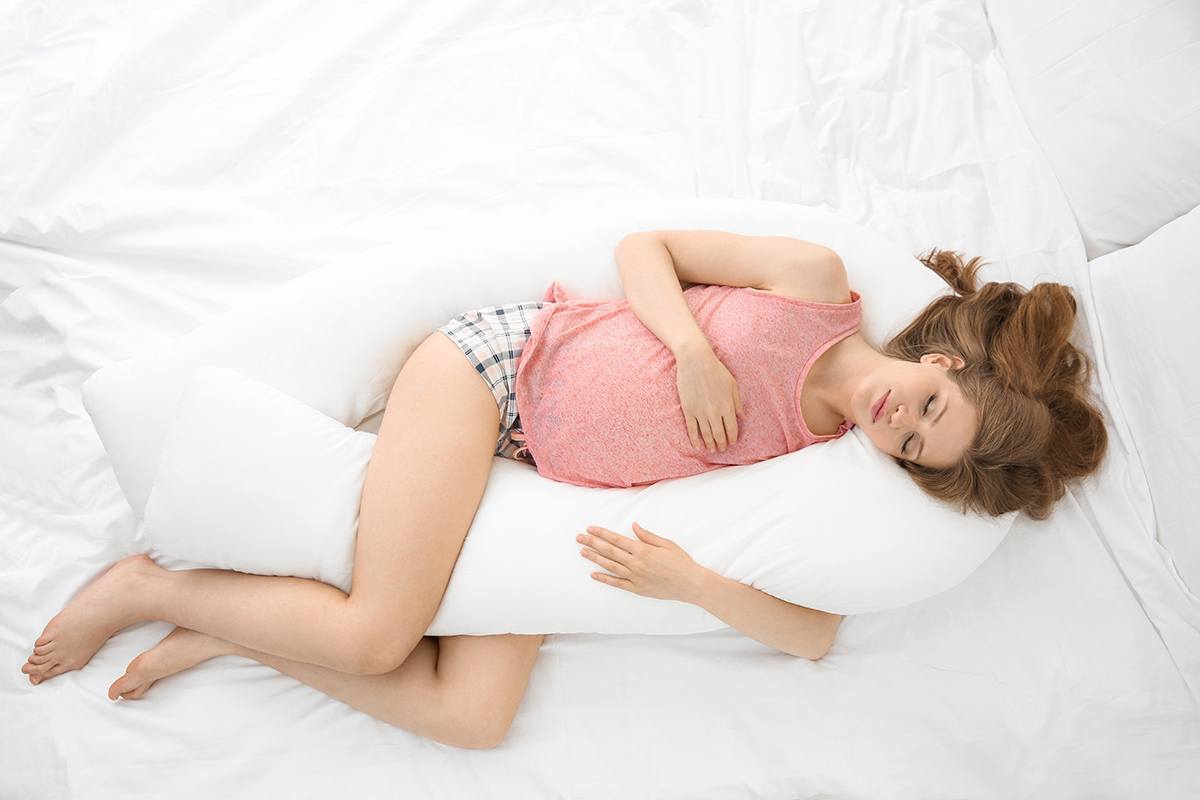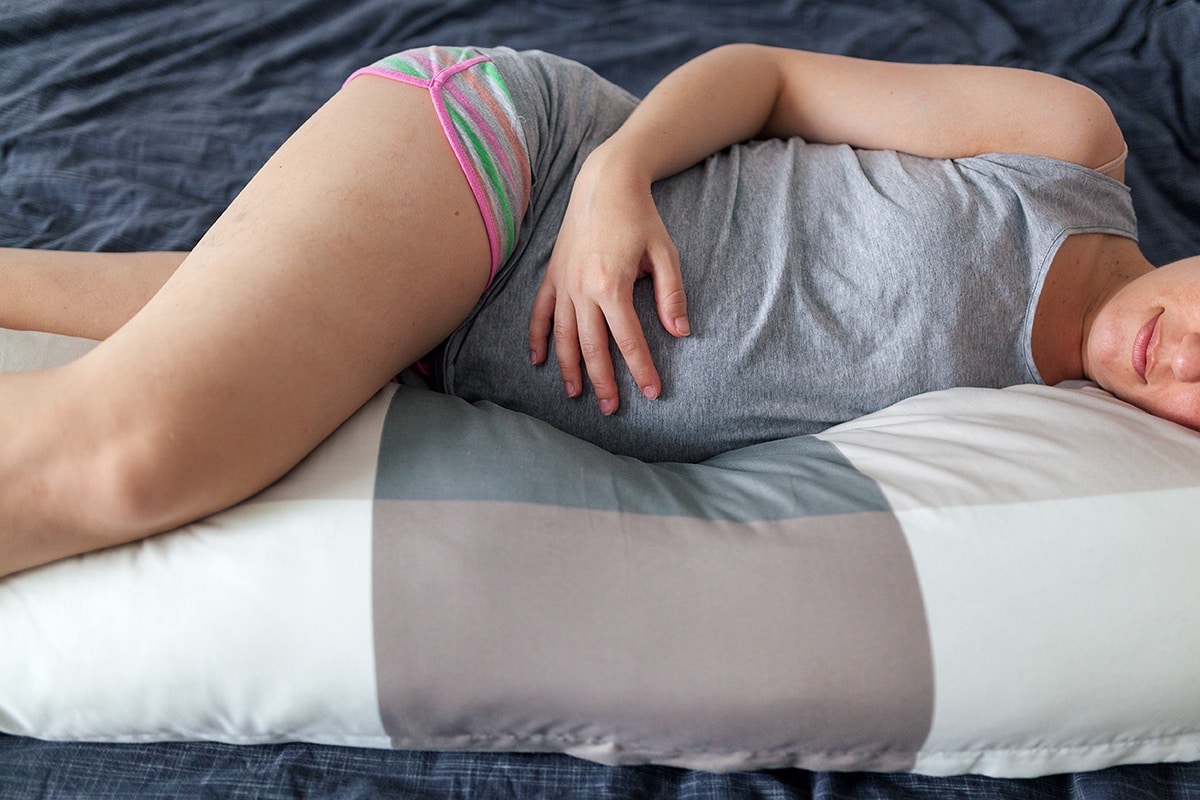When it comes to pregnancy, sleep is essential but often elusive. A pregnant person’s body is growing and changing pretty much constantly. Sleep disruptions, such as extra trips to the bathroom or increased restlessness from discomfort at night, can hinder people’s ability to rest.
Enter a little help from the pregnancy pillow — also referred to as the maternity pillow. This type of pillow is designed with a mother-to-be’s needs in mind. It’s primarily used to help support pregnant women and their growing bump so they can stay comfortable and rest as long as possible each night (or each nap!).
Just like a regular pillow, what works for one person might not work for another. The good news here is that there are plenty of different pregnancy pillows to choose from and many factors to help people decide which one might be the best fit for them.
We’ve put together this comprehensive pregnancy pillow guide to all things pregnancy-pillow-related. It should help people find their perfect pillow partner and achieve that sweet, non-interrupted sleep that all pregnant people dream about.

Pregnancy Pillow Guide: What Exactly Is a Pregnancy Pillow?
The idea behind the pregnancy pillow is simple: It’s a cushion or pillow that is made to accommodate a person’s body as it grows and changes during pregnancy. Basically, they make sleeping during pregnancy more comfortable.
Pregnancy pillows come in all different shapes, sizes, fabrics, fillings, and prices. Some will support the length of the body, while others are wedge-like or bean-shaped and can fit just under your baby bump or between the knees for isolated support.
RELATED: Best Pillows
The key thing to remember is there is no one universally perfect pillow for all pregnant women (I wish!). For some, this is their first pregnancy and they won’t know what feels good from one trimester to the next. For others, this might be round two or three, and even though they know what’s helped in the past, there may be new challenges or discomforts.
It’s helpful to keep an open mind and be willing to try several options in order to find the right pillow for people’s needs.
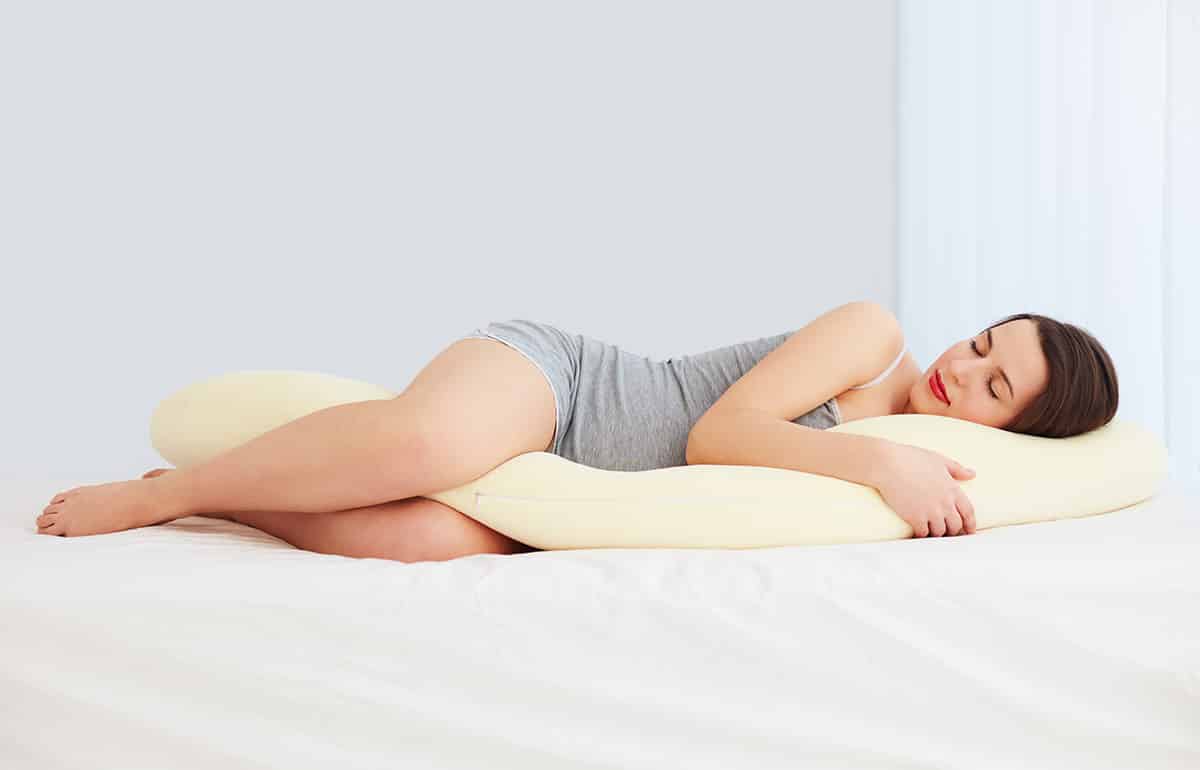
The Benefits of Using a Pregnancy Pillow
One of the main reasons — if not the main reason — many women choose to use a pillow specifically designed for pregnancy is to stay as comfortable as possible.
People who have already experienced pregnancy and childbirth know that they need all the sleep they can get before birth. People start parenthood with a sleep deficit from the time spent laboring and delivering their child. And once they actually arrive? Anywhere near eight hours of sleep will probably be hard to achieve for at least the first few months.
“When you’re pregnant, it can be tough to get solid sleep for a number of reasons,” say the experts at National Sleep Foundation (NSF). “One major cause of restlessness: As the baby grows — and as you grow — it may get harder to find a comfortable position at night.”
Luckily, a specialized pregnancy pillow may be able to swoop in and save the day (or night).
“A good pregnancy pillow can relieve pressure on the spine, back, and hips while improving the alignment of the hip, shoulder, and spine,” according to the Parenting Healthy Babies website. “A pregnancy pillow is instrumental in preventing an expecting woman from sleeping on her stomach in an uncomfortable and dangerous position.”
Another benefit? Many pillows end up being comfortable and useful even after pregnancy. They can be used to help moms stay supported during post-delivery recovery and to help with breastfeeding or other postpartum activities.
5 Different Types of Pregnancy Pillows
There are approximately five main categories of pregnancy pillows. Here’s a description of each.
Wedge
Wedge pillows are popular because they’re multi-functional and can be used during and after pregnancy and delivery. The shape is often comparable to a wedge of cheese and can come in both round and triangular options. Typically, people put put the wedge under their bump to help support it as they sleep or rest. People can also use it to elevate their back or their legs.
“Pregnancy wedges are one of the cheapest pregnancy pillow solutions available,” according to the Parent Guide website. “Many mothers like pregnancy wedges because they are still practical after giving birth. Getting comfortable watching television? Yep. Propping your regular pillow up? Yep. You do not have to be pregnant to enjoy a pregnancy wedge pillow.”
RELATED: Hiccapop Wedge Pregnancy Pillow Review
Total Body
Total body pregnancy pillows curve around your entire body and are able to support you on more than one side. They tend to be C-shaped or U-shaped and cradle your body — providing great support for both your neck and back as well as between your knees and under your stomach.
The total body pillow is one of the most popular types of pregnancy pillows because it offers the most support, something that many pregnant people look for as they enter the third trimester.
RELATED: Oggi Elevation Pregnancy Pillow
Full Length
A full-length pregnancy pillow is basically the same thing as what you see marketed as a standard body pillow. It’s often a longer version of a traditional pillow but can provide much-needed comfort during pregnancy by supporting your stomach and helping your back stay in alignment when you place the pillow between your knees.
Unlike the total body pillow, this variety of pregnancy pillow will focus on supporting one side of your body. It is usually straight, but some full-length pillows are made with more flexible fabrics and fillings to mold more easily to your body.
Bean
The Bean pillow is bean-shaped (surprise!) and pretty compact. It can be used to add support to specific spots on a pregnant woman’s body that might need extra attention, whether it’s resting on your lower back in an office chair or between your knees at night or during a nap. These pillows are usually pretty affordable and easy to travel with thanks to their compact size.
Inflatable
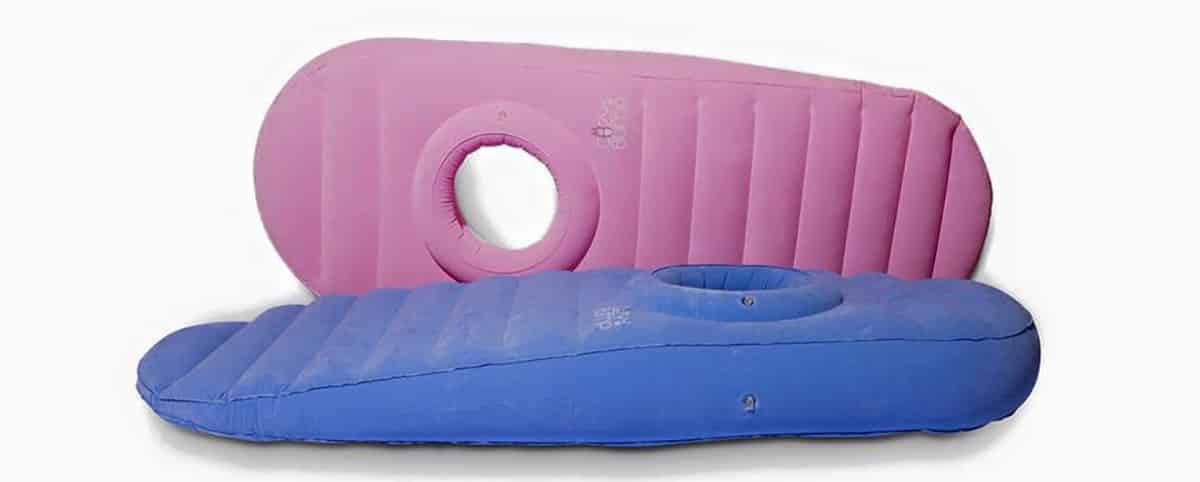
Inflatable pregnancy pillows may not be as common as their full-length or total body counterparts, but they have the ability to help meet some specific pregnancy comfort needs. For example, many are designed so women can rest on their stomachs without putting pressure on their unborn children.
The nice thing about inflatable pillows is that deflating them makes them portable and easy to store. They are also adjustable in the sense that you can decide how full the pillow becomes based on your comfort level.
6 Things to Consider Before Buying
Size
The great news here is that pregnancy pillows come in a huge range of sizes. Here are some questions that will help you determine which size is best for you.
- Where will you be sleeping?
- How big is your bed?
- Do other people sleep in the bed with you?
- Do you have room to store the pillow when you’re not using it?
- Will you be traveling with your pregnancy pillow?
Shape
Some pillows are designed for overall use, while some are shaped to support a specific area. For example, wedge pillows are often best for resting comfortably on your back at an elevated level or placing under the bump for support at night.
Filling
If you’ve ever been pillow shopping, then you know there are a lot of fillings out there — and it’s no different for maternity pillows. Here is a general list of the options you’ll encounter while shopping:
- Memory foam
- Polyester fibers
- Air (inflated)
- Micro-beads
- Wool
- Kapok fibers (seed pod fluff from a rainforest tree)
Fabric
Some pillows come with removable covers, while other covers are not removable. Covers tend to come in typical fabrics such as cotton, organic cotton, jersey knit, polyester knit, and velour. Always check the cleaning instructions if you want something that is machine washable and dryer friendly.
Price
Just like everything else about pregnancy pillows, the prices can really vary depending on what you’re looking for. Be prepared to spend at least $20 to $30 for a pillow. Higher-end, full-body pillows could run over $100.
Trimester & Sleep Position
The trimester you’re in and the position you tend to sleep in go hand in hand when choosing a pregnancy pillow.
“For stomach-sleepers, the bedtime battles can start as early as the first trimester, when sore breasts can make your usual sleeping position uncomfortable,” says the National Sleep Foundation.
“By the second trimester, if you’re still sleeping on your back, it’s time to shift, since the weight of your expanding midsection can compromise your circulation,” says the NSF. “And by the third trimester, even if you naturally prefer to sleep on your left side, which is the ideal position during pregnancy, the sheer weight of your bump — combined with the increased laxity in your joints as your body prepares for childbirth — can add up to serious aches and pains.”
With those potential changes in mind, it’s worth considering how you’re feeling at the moment and what changes you may want to anticipate. The right pregnancy pillow can help make these transitions easier and more comfortable.
Sleeping Tips for All Moms-to-Be
If a pregnancy pillow isn’t in the budget at the moment, it’s worth experimenting with extra pillows that you already have at home to see if they make a difference. “In addition to placing a pillow under your head and neck, try putting one between your knees as you rest on your left side,” says the National Sleep Foundation.
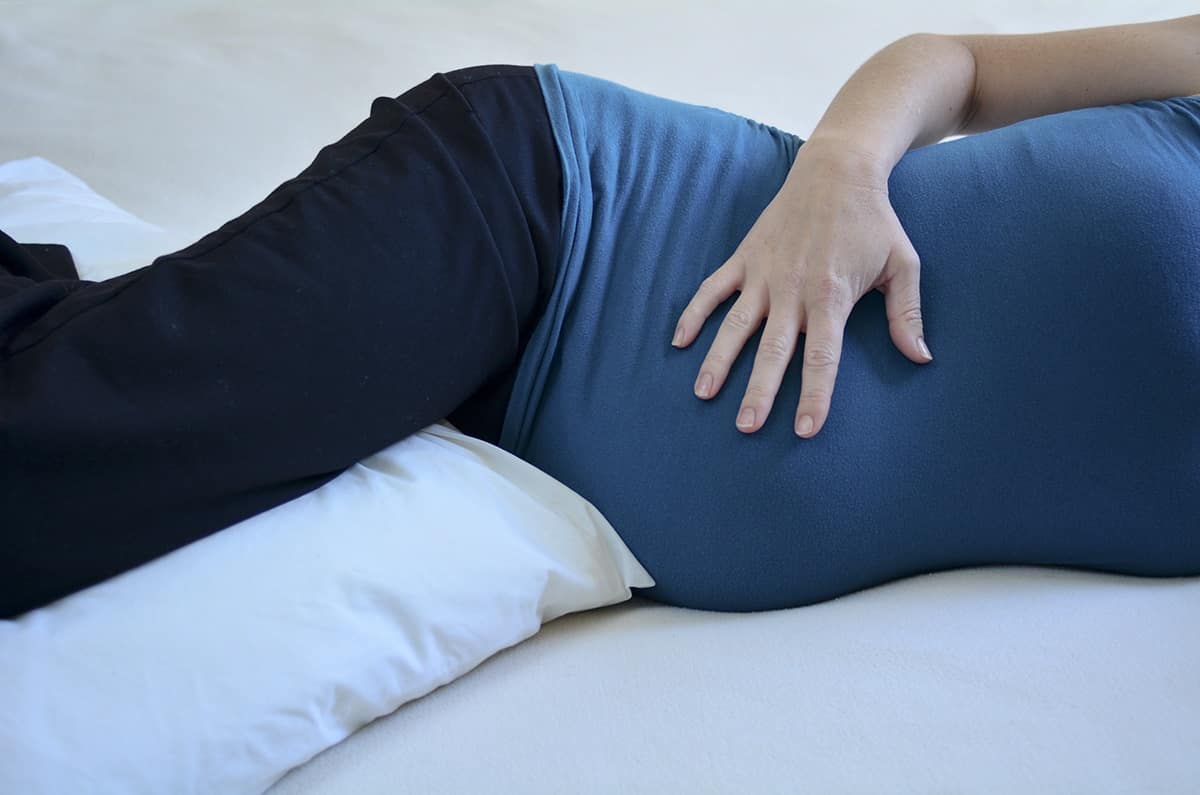
You can also ask friends if they have a pregnancy pillow that’s not being used so you can give one a test drive before shopping for your own.
During the third trimester, it’s generally best to sleep on your side and avoid lying flat on your back for long periods of time. A recent study found that the risk of stillbirth doubles for women who fall asleep on their backs in their third trimester.
You can help prevent heartburn by avoiding spicier foods. Use an elevated pillow if you do end up with heartburn discomfort. Exercise can help increase circulation and reduce the chances of leg cramps that can otherwise wake you up at night. Of course, if you have a persistent medical problem or are suffering from insomnia, it’s best to reach out to your medical professional.
Choosing a pregnancy pillow may take some time and trial and error, but it’s well worth it for the support, comfort, and functionality that the right pregnancy pillow provides.
[Editor’s Note: The content provided on this site is for general informational purposes only. Any information provided is not a substitute for professional medical advice. We encourage you to consult with the appropriate health expert if you have concerns.]
Featured image: Natalia Deriabina/Shutterstock


